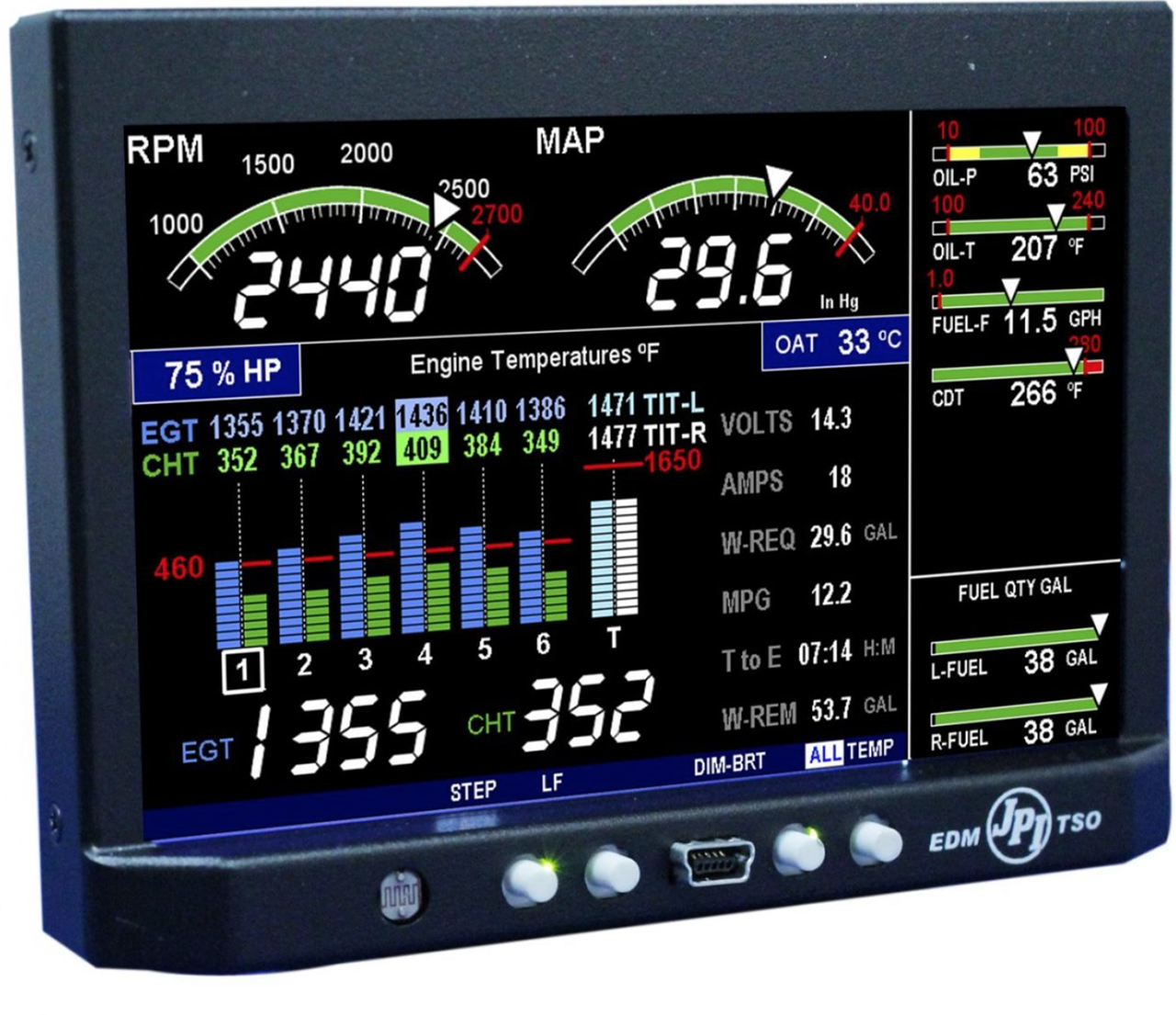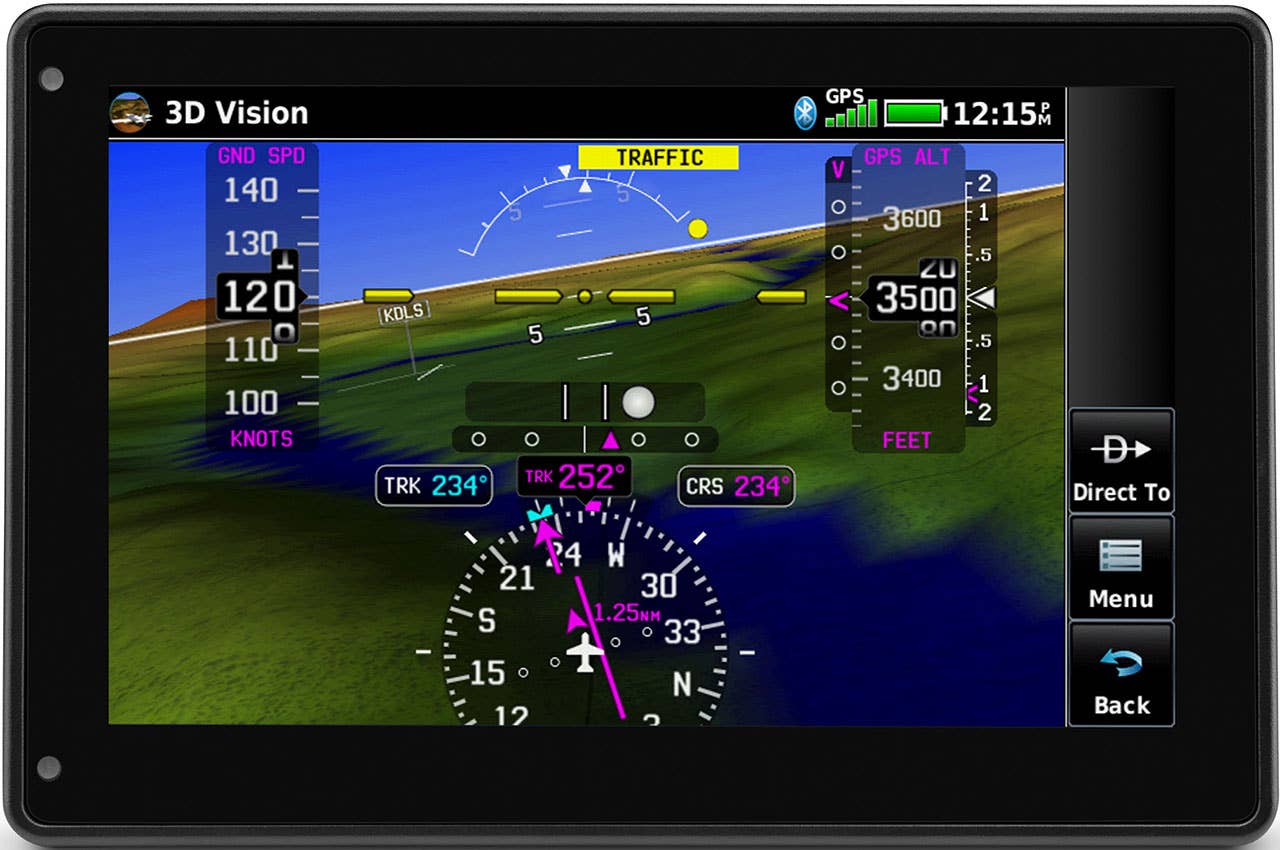JPI EDM900: An Engine Monitor That Can Replace Existing Gauges
You’ll wonder why you ever trusted the old gauges

Courtesy JPI
Many of the airplanes flying today are timeless designs---the airframes and engines may be largely unchanged in decades of production. Skylanes, Bonanzas and the PA-28 series airframes haven't evolved a lot, except for avionics and interiors.
What has changed, though, is how we operate these airplanes. Engine monitors offer an all-in-one solution to owners. With old instruments, adjusting the mixture to a lean of peak setting required guesswork and guaranteed nothing; modern instrumentation made it practical. With modern instruments, diagnosing a stuck valve or dead cylinder went from sticking the butt end of a writing pen onto exhaust stacks to see which ones melted the plastic to simply seeing which cylinder's temperatures are out of whack. A USB thumb drive can now download the data mechanics used to get from pilots trying to explain things that just didn't seem right.
The JPI EDM900 is JP Instruments' baseline engine monitor with primary certification, meaning it can replace your existing engine gauges. Other engine monitors with secondary certification are significantly cheaper, but they legally require your existing gauges to remain installed and operational.
For most installations, the EDM900 can replace an aircraft's entire array of engine gauges---in our evaluation, it replaced the tachometer, manifold pressure and fuel pressure gauges as well as a cluster gauge with fuel quantity, oil temp and pressure, ammeter and single-cylinder CHT. It also replaced an aging JPI EDM700. All the senders are included---and they live firewall-forward. This means that old lines for direct-reading fuel and oil pressure gauges no longer exist behind your instrument panel, where they present a threat of leaks or fire if a line ruptures.
We opted for fuel flow and carburetor temperature indications for use on a Lycoming 0-360-A1D. Our install was fairly straightforward; installation on more complex engines includes allowances for turbochargers, fuel injection and the like. You'll need your aircraft POH and possibly a copy of the aircraft Type Certificate Data Sheet as you fill in the ranges and limits for your instrumentation---get it right the first time to avoid shipping it back to JPI for reprogramming.
Once installed, the display is easily reconfigurable for gauge placement, so the values you need are where you want them to be. The layout was mostly intuitive as delivered, although we did swap the placement of manifold pressure and tachometer.
The high-resolution color display makes your engine data easy to read, and those who've used an older EDM, such as the 700, will find the interface much more user-friendly, having a few more buttons and an on-screen legend. Temperatures for cylinder head temperature and exhaust gas temperature are displayed constantly for all cylinders. Leaning is a breeze with settings for operating lean of peak or rich of peak available. Data downloaded to a USB drive can help your mechanic troubleshoot when something isn't quite right. Savvy Aviation offers SavvyAnalysis, a free service for you to upload engine data for basic troubleshooting.
In an instrument roughly the size of a cluster gauge it replaced, our EDM900 displays RPM, manifold pressure, all CHT and EGT values, outside air temperature, percentage of horsepower, oil temperature and pressure, fuel pressure, carburetor temperature, fuel levels, volts and amps, fuel used, fuel remaining, time to empty, Hobbs meter and cylinder cool-down rate. That's a lot of data, but the clarity of the display makes it easy to process---and a remote alarm light draws your attention to any value out of limits.
With optional fuel flow installed, the unit couples nicely to GPS navigators to calculate fuel required and fuel reserve at your destination or next waypoint. When coupled with CIES fuel-level senders, your airplane can become an exception to the old saying about never trusting fuel gauges. You'll find yourself often knowing within a gallon or 2 what it'll take to top off as you pull up to the pump, but disclaimers abound about trusting the fuel indications.
The price of the unit is half the battle. The installation can cost as much as the unit itself, leading to quoted installs nearing $10,000. The wiring is not complex, just plentiful, and most A&P mechanics should be able to handle it rather than sending it to an avionics installer. If you're handy and have a good relationship with an A&P to supervise your work, this is an opportunity to save thousands of dollars as a do-it-yourselfer. The price of the instrument itself is $4,195 and up, depending on the options selected.
Read more Avionics stories here.

Subscribe to Our Newsletter
Get the latest Plane & Pilot Magazine stories delivered directly to your inbox






